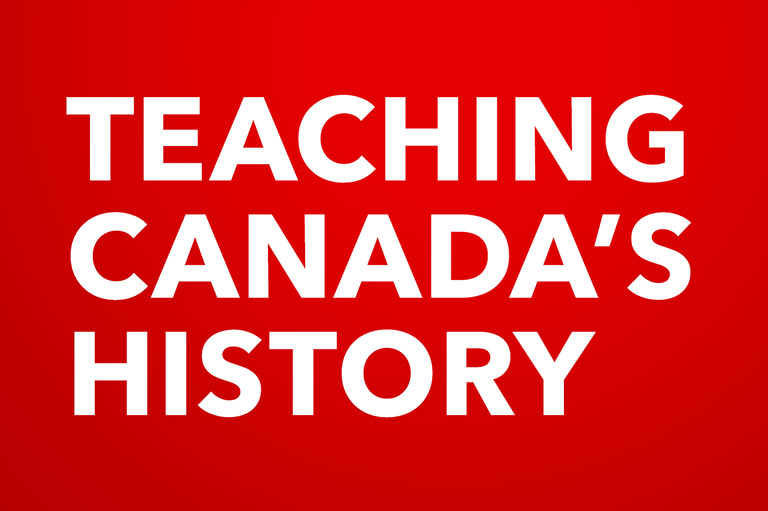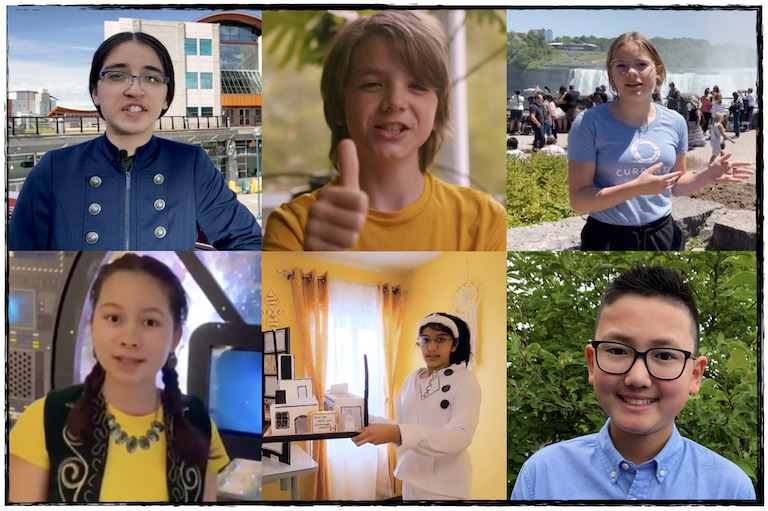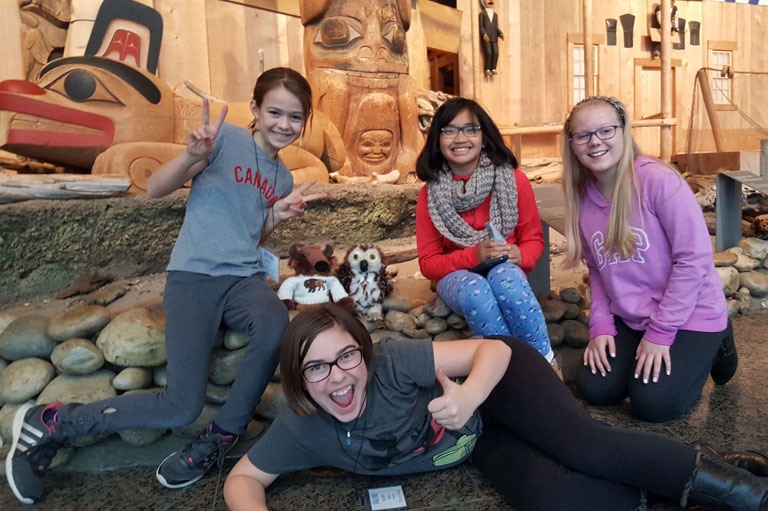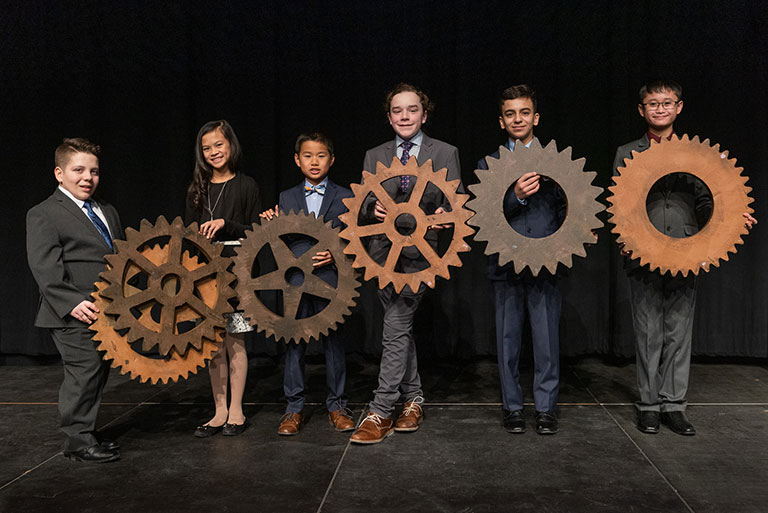2022 Finalists for the Governor General's History Award for Excellence in Teaching
Canada’s History is pleased to announce this year’s shortlist for the Governor General’s History Awards for Excellence in Teaching. Through their unique projects, these 18 finalists demonstrate many best practices in history education, including creating authentic learning experiences, encouraging historical research and critical thinking, incorporating historical thinking concepts, and considering Indigenous perspectives and worldviews.
Established in 1996, the award honours six teachers for innovative approaches to teaching Canadian history. The winners will be announced in the fall.
Congratulations to this year’s finalists!
Andreya Padmore
Orde Street Public School, Toronto, Ontario
In Andreya Padmore’s class, students learned about current and historical events that Canada should be proud of, as well as those that took Canada time to recognize and accept responsibility for. Students went into this project with questions and interest about what happened in Canada and left with more questions, knowledge, and steps to take action toward creating a better future for Canada. For their final project, students were tasked with selecting a racialized Canadian trailblazer or a racialized Canadian inventor to research. Their work was published in a book that was professionally bound and placed in the library so others can learn about the amazing people that have come from Canada.
Barbara Ann Giroux
Holy Family School, Ottawa, Ontario
Barbara Ann Giroux’s first grade class embarked on a vibrant learning journey toward reconciliation. It included participation in the First Nations Child & Family Caring Society’s Reconciliation Ambearrister program, as well as an in-class project on the UN Declaration of the Rights of the Child. Upon class request, it evolved to include all interested students in the school, with the purpose of developing an understanding of equity issues facing many Indigenous communities and TRC Calls to Action within the school. The class shared weekly posts about human rights injustices faced by Indigenous peoples in Canada and invited students to offer their opinions to the weekly question, “Do you think all children in Canada have the same human rights?” The Grade 1 students became knowledgeable leaders in the school, while their teacher became a more reflective practitioner.
Cynthia Bettio
Our Lady Queen of the World Catholic Academy, Richmond Hill, Ontario
High school teacher Cynthia Bettio designed a semester-long project for her Grade 10 Canadian history course that is modeled after the Snapshots in Time cards, developed by Dr. Lindsay Gibson, Dr. Catherine Duquette and the Critical Thinking Consortium. The project culminated in students designing their own digital Canadian history timeline game with an emphasis on the narratives of marginalized groups over time. Students, with the support of STEM Minds Inc. and using Unity (a gaming language), developed an interactive Canadian history timeline game which will engage users in navigating key events in the history of 2SLGBTQ, women, immigrants, Indigenous groups, disabled people, and people of colour in Canada since 1914.
Evelina Cino
Bernie Custis Secondary School, Hamilton, Ontario
Designed as a final culminating task, Evelina Cino’s project allows her students to showcase their learnings in CHC2D by creating a digital scrapbook of Canadian history. Upon completion of each of the four strands of the course, students choose an event for analysis based on personal interest. Students are also asked to choose one of the four strands of historical thinking and explain its relevance to their chosen event, thus making the learning relevant to the world in which they live today. This project allows students to be active participants rather than passive recipients in the learning process, taking ownership of their learning and having the creative freedom to demonstrate what they have learned.
Hélène Wyskup
St. John the Apostle, Ottawa, Ontario
Hélène Wyskup’s project was guided by her lesson plan on the history of the First Peoples of Upper Canada. Her project encouraged Grade 3 FSL students to undertake research, write cards and make a quilt on one of the first communities in Upper Canada: Loyalists, Anishinaabeg, Haudenosaunee, Métis, Cree, or Inuit. In groups of three, students chose a different community. They undertook research on the similarities and differences in lifestyles from 1780 to 1850 (daily life, home, clothing, food, transport and traditions). After their presentations and discussions, students demonstrated their understanding of the identity and cultural diversity of past and present traditions.
Jacqueline Robichaud
Ste-Anne, Fredericton, New Brunswick
Jacqueline Robichaud’s project measures students' ability to compare societies with each other at different times, to understand the impact of British imperialism on Indigenous peoples and their role in reconciliation with First Nations. To do this, students compare the evolution of Acadians, Indigenous people, and Quebecers by highlighting the conditions for the development of society. The students, using the scientific method, combined with the concepts of historical thinking, regrow celery, uproot them and deprive them of their natural habitat to illustrate what the Acadians experienced during the Great Upheaval in 1755, and Indigenous peoples when reserves and the Indian Act were imposed around 1876. For comparison, the celery sown in the farmer's vegetable garden illustrates the evolution of French Canadians in New France from 1608 to the present day. Students understand the importance of a territory in the development of peoples, the effects of uprooting them and the consequential intergenerational trauma. They are thus made aware of systemic racism.
Jennifer Maxwell
W.J. Mouat Secondary, Abbotsford, British Columbia
After participating in an Indigenous-focused interdisciplinary class, students in Jennifer Maxwell’s class created real-world projects that could contribute to reconciliation. Throughout the course, students explored Indigenous contexts and histories, with topics about the legacy of colonial oppression including land claims (and the LANDBACK movement); Missing and Murdered Indigenous Women, Girls, and Two-Spirit persons; the Sixties and Millennial Scoops; residential schools and day schools; the Indian Act; the Band Council system; and the reserve system. Students then researched and explored the work of the Truth and Reconciliation Commission, specifically around the Calls to Action. Finally, for students to participate in their own act of reconciliation, they chose a topic, an audience, and a product to design to help their targeted audience engage in reconciliation.
Jonathan Giles
Earl Grey Senior Public School, Toronto, Ontario
In Jonathan Giles’s project, students seek to understand the complex legacies arising from the points of view of the Fathers of Confederation by creating a scripted dialogue between two figures of that time. Starting with a discussion on the removal of the statues of John A. Macdonald, students dig into the dominance of the Orange Order in 19th century Canadian politics and interrogate the commonalities in the treatment of Irish migrants and Métis peoples. This assists students to explain what spurred both Irish Fenians and the Métis to strike violently against the dominant political order of the Confederation era.
Luisa Fracassi
St. Joan of Arc Catholic Academy, Toronto, Ontario
Luisa Fracassi developed her project “Immigrant Voices” as an experiential learning opportunity for her high school students. First, students attended two virtual tours and a workshop run by the Canadian Museum of Immigration at Pier 21 in Halifax. The tours explored the immigrant experience by using memoirs, interviews, and other primary sources, while the workshops shared the history of and process behind conducting oral history interviews. Using what they learned from Pier 21, students conducted an oral history interview with an immigrant, transcribed the interview, and created a historical narrative in a magazine-style layout about their interviewee’s experiences.
Lysa Conti and Loucy Chérubin
Wilfrid-Bastien, St-Leonard, Quebec
The multidisciplinary project developed by Lysa Conti and Loucy Chérubin aims to raise awareness of the contribution of Black people in history, in the past and present around the world but especially in Canada. The activities are aimed primarily at preschool and elementary school students. Throughout the project, students develop skills in the areas of children's literature, the visual arts, English, and reading and writing. For each of the cycles, the proposed activities are adapted to the level of the students. The themes explored include body diversity, acceptance of differences, perseverance, assertiveness, slavery, justice, and freedom. This project aims to bring students together. Once a week, the students present through a virtual meeting and exchange platform capsules aimed at introducing key figures in Black history to all the students at the school.
Melissa Moorhouse
Etobicoke School of the Arts, Etobicoke, Ontario
Melissa Moorhouse’s project, "Ethical Dilemmas — Then and Now," is an inquiry-based student experience within her class’s examination of key aspects of the Second World War. The project encourages meaningful personal development through reflection on transformational ethical questions. Through research, self-reflection, and conversation, students connect an ethical dilemma of the past to a contemporary Canadian issue. Embracing Universal Design for Learning, students can choose a medium of communication that best suits their learning styles and strengths. It combines the inquiry process, critical evaluation, and higher order thinking all with creative transformative outcomes. Rooted in diversity, equity, and inclusivity, it allows students to connect to their own identities and passions.
Natasha Camacho
École St. Catherine’s Elementary School, Halifax, Nova Scotia
Throughout the month of February, the Grade 1 students in Natasha Camacho’s class learned about various African Canadians — presently living and throughout history. One person they learned about was Dr. Clement Ligoure, the first Black doctor in Nova Scotia and a very notable hero of the Halifax Explosion. Their project involved researching Dr. Ligoure and reporting on their findings through writing, artwork, and video creation. Finally, students wrote letters to the mayor, appealing for more public acknowledgement of Dr. Ligoure and his legacy.
Robert Jardine
Warman High School, Warman, Saskatchewan
Robert Jardine’s research-focused book project engages students in the process of writing history. Students co-create research questions and use those questions as frames to consider various periods in Canadian history. Over the course of the semester, students organize, research, locate images, and write chapters for a student-created history textbook that reflects their interpretation of significant events and peoples in Canada’s past. The intended outcome is that the students use a variety of competencies to create their textbook and that they begin to understand the power of past events in shaping their worldviews and the world they live in, as well as roles that individuals, organizations, and institutions wield in the creation of history.
Stéphanie Pain
École Monseigneur de Laval, Regina, Saskatchewan
Stéphanie Pain’s project had her students studying the tale of a Flying Fish who wanted to become a Hummingbird. Developed with the support of author and Métis-Anishinaabe Elder Dolorès Contré, the project offers an example of the integration of Indigenous perspectives, content, and ways of learning in French courses. It also highlights the power of Indigenous stories for the transmission of knowledge. The process allowed the students and the teacher, guided by the author, to experience circular thinking beyond simple intellectual understanding. Students experienced holistic learning rooted in their territory and learned about the interdependence of animate and inanimate beings. Social studies, theatre, and visual arts activities allowed students to understand the issues of promoting, preserving, and revitalizing Indigenous knowledge.
Tanya Andersen
Milton District High School, Milton, Ontario
In answering the question, "To what extent have diverse voices shaped Canadian identity and culture?", students in Tanya Andersen’s high school history class can give a direct answer, do a deep dive into a topic of interest from the unit, or complete an "Andersen Assignment," which is an assignment that has more structure. For the unit question and the deep dive, students have a choice of medium through which to communicate their thinking. The “Andersen Assignment” requires students to follow the Design Thinking Process to examine the Grade 10 history textbook for gaps in coverage of a Canadian identity. This project allows students to critically examine the textbook and become advocates for change.
Tracey Salamondra and Carla Cooke
Hartney School, Hartney, Manitoba
Tracey Salamondra and Carla Cooke designed a cross-curricular project where students partnered with community members and organizations to create historical narratives for an interpretive trail expansion in a neighbouring community. The project capitalized on the assets of rural communities, strong relationships, and the ability to overcome obstacles that emerged while completing an inquiry project during the pandemic. The students interviewed current and former residents and worked with museum artifacts, digital archives, and local historians as secondary sources. After studying storytelling, narrative writing, and the writing process, students each wrote, edited, and fact-checked three narratives of their choosing. The project allowed students to see history as a living discipline and learn about their communities' stories, changing how they viewed their rural communities.
Themes associated with this article
Advertisement
You might also like...
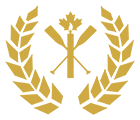
Nominations for the Governor General's History Award for Excellence in Teaching are accepted all year round.

